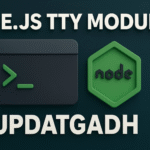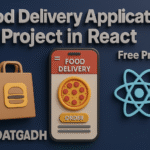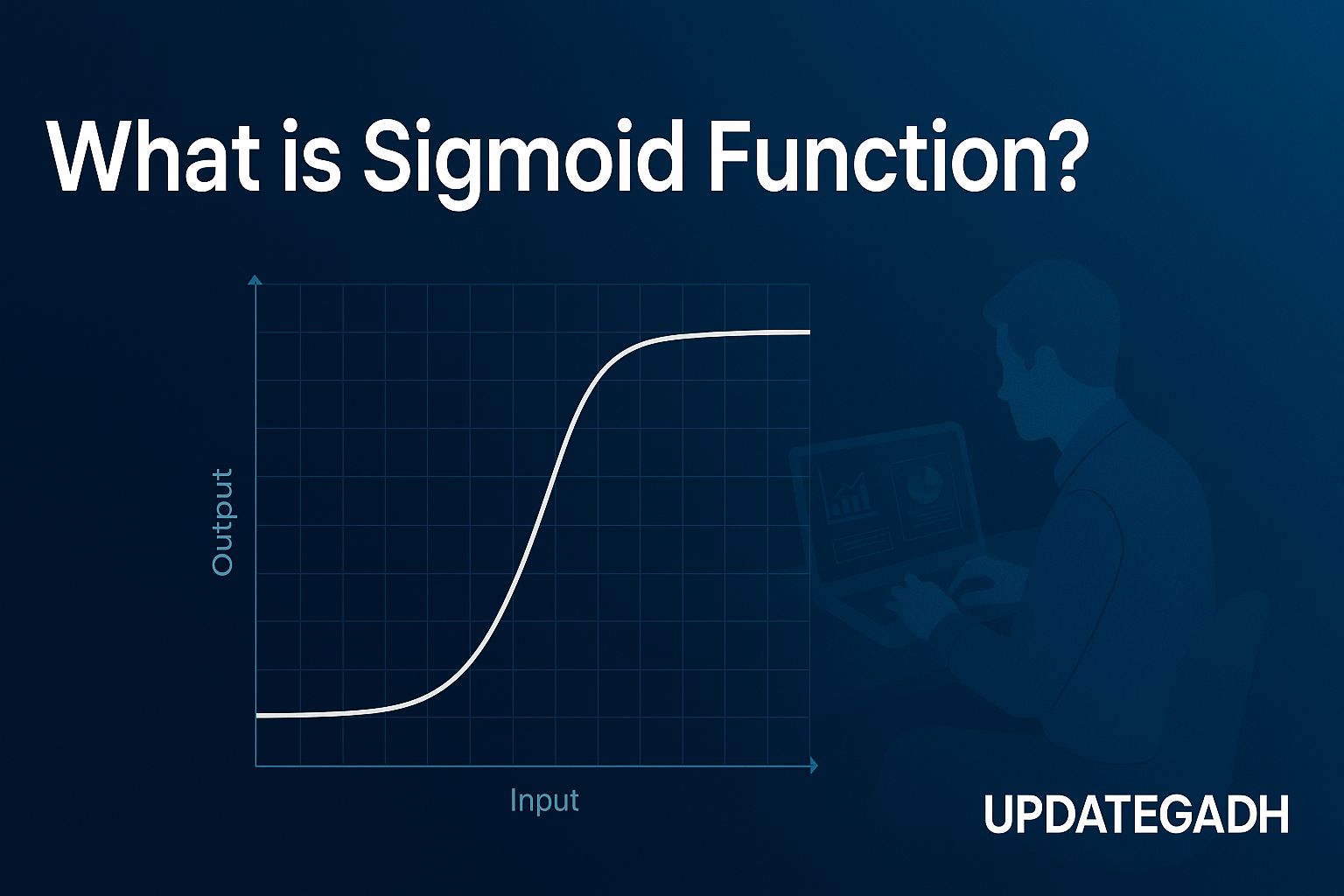
What is Dropout in Neural Network
Dropout in Neural Network
One of the key challenges in deep learning is ensuring that models not only learn from the training data but also generalize well to unseen data. A common roadblock to this is overfitting—when a model performs brilliantly on the training data but fails to deliver similar results on validation or test datasets.
To tackle this, researchers have developed various regularization techniques, and Dropout stands out as one of the most effective and widely adopted.
Complete Python Course with Advance topics:-Click Here
SQL Tutorial :-Click Here
Data Science Tutorial:-Click Here
🔄 What is Dropout?
One regularisation technique that keeps neural networks from overfitting is dropout. It works by randomly disabling (or “dropping”) a subset of neurons during the training process. At each training iteration, different neurons are deactivated, creating a unique sub-network each time. This encourages the model not to rely too heavily on specific neurons, thereby promoting feature redundancy and better generalization.
During inference, however, dropout is turned off. The dropout rate ensures that the output stays balanced by reducing the weights of the remaining active neurones to maintain consistent output behaviour.
✅ Benefits of Dropout in Neural Networks
Here are the key reasons why dropout is such a powerful tool:
1. Prevents Overfitting
By randomly disabling neurons during training, dropout discourages the network from becoming overly reliant on specific features. The network is compelled by this unpredictability to acquire broader representations of the data.
2. Improves Robustness
Dropout teaches the model to function well even in the absence of some network components. This results in robust models that can handle noisy or slightly altered inputs more effectively.
3. Reduces Model Complexity
Effectively, dropout reduces the number of parameters during training. This simplification keeps the model from overfitting the data and becoming overly complicated.
4. Efficient Model Averaging
Dropout simulates training multiple networks simultaneously and averages their outputs, leading to more accurate and stable predictions—similar to ensemble methods, but much more efficient.
5. Accelerates Convergence
Though it slows each epoch due to additional computations, dropout often leads to faster overall convergence by helping the model reach a better solution sooner.
6. Enhances Interpretability
Dropout-trained models tend to focus on more essential features, resulting in cleaner, more interpretable outputs.
🎯 Choosing the Right Dropout Rate
Typically, dropout rates range from 0.2 to 0.5. While a greater rate could impede learning and result in underfitting, a lower rate might not offer sufficient regularisation. Your data and model architecture determine the ideal rate.
🧪 Dropout Variants: Pushing the Boundaries
As deep learning evolved, several dropout variants were introduced to address different architectures and tasks:
- Spatial Dropout: Drops entire feature maps in CNNs instead of individual neurons, preventing over-dependence on localized features.
- DropConnect: Randomly removes weights (connections) instead of neurons, improving generalization in dense layers.
- AlphaDropout: Maintains mean and variance, designed to work with SELU activations for self-normalizing networks.
- Variational Dropout: Learns individual dropout rates per neuron, making the model adaptively regularized.
- Monte Carlo Dropout: Applies dropout at inference to estimate uncertainty, useful in Bayesian deep learning.
- Concrete Dropout: Uses differentiable relaxation to learn dropout rates during training.
- Gaussian Dropout: Provides smoother regularisation by multiplying inputs by Gaussian noise.
- Targeted Dropout: Selectively drops neurons based on importance, not at random.
- Adversarial Dropout: Combines dropout with adversarial training for improved robustness.
- Scheduled Dropout: Gradually reduces the dropout rate over training epochs, like a learning rate schedule.
🧑💻 Implementation in TensorFlow/Keras
Let’s look at how dropout influences model performance on the MNIST dataset using TensorFlow.
Step 1: Import Libraries
import numpy as np
import matplotlib.pyplot as plt
import tensorflow as tf
from tensorflow.keras.models import Sequential
from tensorflow.keras.layers import Dense, Dropout
from tensorflow.keras.datasets import mnist
from tensorflow.keras.utils import to_categorical
Step 2: Load and Preprocess the Data
(train_X, train_y), (test_X, test_y) = mnist.load_data()
train_X = train_X.reshape(-1, 28 * 28).astype('float32') / 255
test_X = test_X.reshape(-1, 28 * 28).astype('float32') / 255
train_y = to_categorical(train_y, 10)
test_y = to_categorical(test_y, 10)
Step 3: Build Models (With & Without Dropout)
Without Dropout
model_no_dropout = Sequential([
Dense(512, activation='relu', input_shape=(784,)),
Dense(512, activation='relu'),
Dense(10, activation='softmax')
])
model_no_dropout.compile(optimizer='adam', loss='categorical_crossentropy', metrics=['accuracy'])
history_no_dropout = model_no_dropout.fit(train_X, train_y, epochs=20, batch_size=128, validation_split=0.2, verbose=2)
With Dropout
model_with_dropout = Sequential([
Dense(512, activation='relu', input_shape=(784,)),
Dropout(0.5),
Dense(512, activation='relu'),
Dropout(0.5),
Dense(10, activation='softmax')
])
model_with_dropout.compile(optimizer='adam', loss='categorical_crossentropy', metrics=['accuracy'])
history_with_dropout = model_with_dropout.fit(train_X, train_y, epochs=20, batch_size=128, validation_split=0.2, verbose=2)
Step 4: Visualize Performance
Accuracy Comparison (Side-by-Side)
plt.figure(figsize=(14, 6))
plt.subplot(1, 2, 1)
plt.plot(history_no_dropout.history['accuracy'], label='Train')
plt.plot(history_no_dropout.history['val_accuracy'], label='Validation')
plt.title('Accuracy without Dropout')
plt.xlabel('Epoch')
plt.ylabel('Accuracy')
plt.legend()
plt.subplot(1, 2, 2)
plt.plot(history_with_dropout.history['accuracy'], label='Train')
plt.plot(history_with_dropout.history['val_accuracy'], label='Validation')
plt.title('Accuracy with Dropout')
plt.xlabel('Epoch')
plt.ylabel('Accuracy')
plt.legend()
plt.show()
Combined Accuracy Plot
plt.figure(figsize=(14, 6))
plt.plot(history_no_dropout.history['accuracy'], label='Train without Dropout')
plt.plot(history_no_dropout.history['val_accuracy'], label='Val without Dropout')
plt.plot(history_with_dropout.history['accuracy'], label='Train with Dropout')
plt.plot(history_with_dropout.history['val_accuracy'], label='Val with Dropout')
plt.title('Dropout vs No Dropout Accuracy')
plt.xlabel('Epoch')
plt.ylabel('Accuracy')
plt.legend()
plt.show()
Loss Comparison (Side-by-Side)
plt.figure(figsize=(14, 6))
plt.subplot(1, 2, 1)
plt.plot(history_no_dropout.history['loss'], label='Train')
plt.plot(history_no_dropout.history['val_loss'], label='Validation')
plt.title('Loss without Dropout')
plt.xlabel('Epoch')
plt.ylabel('Loss')
plt.legend()
plt.subplot(1, 2, 2)
plt.plot(history_with_dropout.history['loss'], label='Train')
plt.plot(history_with_dropout.history['val_loss'], label='Validation')
plt.title('Loss with Dropout')
plt.xlabel('Epoch')
plt.ylabel('Loss')
plt.legend()
plt.show()
Download New Real Time Projects :-Click here
Complete Advance AI topics:- CLICK HERE
🧠 Conclusion
One of the most straightforward yet successful regularisation strategies in neural networks has been dropout.. While it may slow down initial training slightly, its benefits in terms of generalization, robustness, and reduced overfitting make it a crucial component in any deep learning toolbox.
As seen from our experiments, the model with dropout maintains better validation performance even if the training accuracy grows more slowly. For real-world applications, this trade-off is often worth it.
Stay updated with Updategadh for more tutorials, guides, and practical implementations in AI, ML, and deep learning.
what is dropout in machine learning
what is dropout in deep learning
dropout: a simple way to prevent neural networks from overfitting
in which phase of training is dropout applied in neural networks?
dropout regularization in deep learning
dropout in cnn
dropout layer
dropout layer pytorch
what is dropout in a neural network python
what is dropout in a neural network geeksforgeeks
in which phase of training is dropout applied in neural networks
dropout in machine learning
dropout in cnn
dropout in deep learning
dropout: a simple way to prevent neural networks from overfitting
dropout regularization in deep learning
dropout layer
dropout rate neural network
in which phase of training is dropout applied in neural networks?
neural network
batch normalization
dropout in neural network geeksforgeeks
dropout in neural network python
dropout in neural network
purpose of dropout in neural network
how to implement dropout in neural network
what is the purpose of using dropout in neural network
what does dropout in neural network achieve
dropout in neural network pytorch
purpose of dropout in neural networks
dropout in neural network example
what is the purpose of dropout in neural network
using dropout in neural network
why dropout in neural network










Post Comment